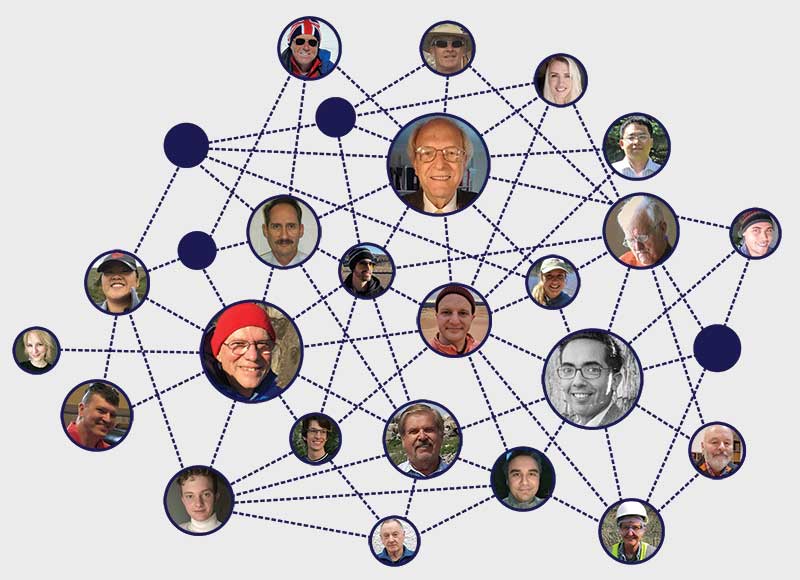 Aggregation vs. Decay
Aggregation vs. Decay
Since Magnetized Quark Nuggets are not observed in high-energy accelerator experiments, aren’t they excluded as stable particles and therefore cannot be dark matter?
 Aggregation vs. Decay
Aggregation vs. Decay
Since Magnetized Quark Nuggets are not observed in high-energy accelerator experiments, aren’t they excluded as stable particles and therefore cannot be dark matter?

MQN Guide
Much like GPS guides one along a pathway to a destination, we present 8 “waypoints” of relevant information to guide readers through the overall concept.
Peer Reviewed Science
Is there solid science supporting Magnetized Quark Nuggets as a candidate for dark matter?
Dark Matter
Tell me about dark matter and the Standard Model of Cosmology.
Normal Matter and Quarks
Tell me about normal matter, quarks, and the Standard Model of Particle Physics.
Quark Nuggets and Magnetar Pulsars
What do Magnetar Pulsars have to do with Quark Nuggets?
Aggregation vs. Decay
Since Quark Nuggets are not observed in high-energy accelerator experiments, aren’t they excluded as stable particles and therefore cannot be dark matter?
Detection
If MQNs exist, how can they be detected and have they been detected?
Capture
Since MQNs should be indestructible, can their passage through the Sun slow them down enough to make them collectable?
Applications
If MQNs can be collected, what applications might they enable?

People Make Progress
Recently, we have shown that single quark nuggets would
- form at about 65 microseconds after the Big Bang when the universe was small and dense,
- aggregate by their magnetic attraction before they could decay,
- satisfy requirements for dark matter, and
- be consistent with the Standard Models of Particle Physics and of Cosmology.
Our computed mass distribution indicates MQNs formed in the early universe can have any mass greater than ~1000 protons, but most of the mass is in MQNs with masses between ~1 and ~3,000,000 kilograms. Such large MQN mass means they are very rare.
MQN Guide
Much like GPS guides one along a pathway to a destination, we present 8 “waypoints” of relevant information to guide readers through the overall concept.
Peer Reviewed Science
Is there solid science supporting Magnetized Quark Nuggets as a candidate for dark matter?
Dark Matter
Tell me about dark matter and the Standard Model of Cosmology.
Normal Matter and Quarks
Tell me about normal matter, quarks, and the Standard Model of Particle Physics.
Quark Nuggets and Magnetar Pulsars
What do Magnetar Pulsars have to do with Quark Nuggets?
Aggregation vs. Decay
Since Quark Nuggets are not observed in high-energy accelerator experiments, aren’t they excluded as stable particles and therefore cannot be dark matter?
Detection
If MQNs exist, how can they be detected and have they been detected?
Capture
Since MQNs should be indestructible, can their passage through the Sun slow them down enough to make them collectable?
Applications
If MQNs can be collected, what applications might they enable?

People Make Progress
Recently, we have shown that single quark nuggets would
- form at about 65 microseconds after the Big Bang when the universe was small and dense,
- aggregate by their magnetic attraction before they could decay,
- satisfy requirements for dark matter, and
- be consistent with the Standard Models of Particle Physics and of Cosmology.
Our computed mass distribution indicates MQNs formed in the early universe can have any mass greater than ~1000 protons, but most of the mass is in MQNs with masses between ~1 and ~3,000,000 kilograms. Such large MQN mass means they are very rare.
Recently, we have shown that single quark nuggets would
- form at about 65 microseconds after the Big Bang when the universe was small and dense,
- aggregate by their magnetic attraction before they could decay,
- satisfy requirements for dark matter, and
- be consistent with the Standard Models of Particle Physics and of Cosmology.
Our computed mass distribution indicates MQNs formed in the early universe can have any mass greater than ~1000 protons, but most of the mass is in MQNs with masses between ~1 and ~3,000,000 kilograms. Such large MQN mass means they are very rare.
MQN Guide
Much like GPS guides one along a pathway to a destination, we present 8 “waypoints” of relevant information to guide readers through the overall concept.
Peer Reviewed Science
Is there solid science supporting Magnetized Quark Nuggets as a candidate for dark matter?
Dark Matter
Tell me about dark matter and the Standard Model of Cosmology.
Normal Matter and Quarks
Tell me about normal matter, quarks, and the Standard Model of Particle Physics.
Quark Nuggets and Magnetar Pulsars
What do Magnetar Pulsars have to do with Quark Nuggets?
Aggregation vs. Decay (above)
Since Quark Nuggets are not observed in high-energy accelerator experiments, aren’t they excluded as stable particles and therefore cannot be dark matter?
Detection
If MQNs exist, how can they be detected and have they been detected?
Capture
Since MQNs should be indestructible, can their passage through the Sun slow them down enough to make them collectable?
Applications
If MQNs can be collected, what applications might they enable?


